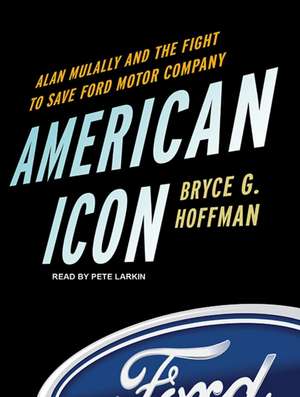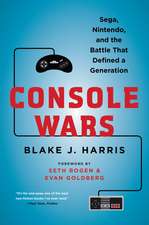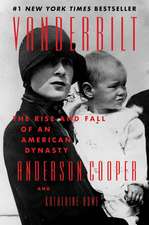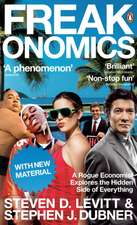American Icon: Alan Mulally and the Fight to Save Ford Motor Company
Autor Bryce G. Hoffman Pete Larkinen Limba Engleză CD-Audio – 31 mai 2012
At the end of 2008, Ford Motor Company was just months away from running out of cash. With the auto industry careening toward ruin, Congress offered all three Detroit automakers a bailout. General Motors and Chrysler grabbed the taxpayer lifeline, but Ford decided to save itself. Under the leadership of charismatic CEO Alan Mulally, Ford had already put together a bold plan to unify its divided global operations, transform its lackluster product lineup, and overcome a dys-functional culture of infighting, backstabbing, and excuses. It was an extraordinary risk, but it was the only way the Ford family—America's last great industrial dynasty—could hold on to their company. Mulally and his team pulled off one of the great-est comebacks in business history. As the rest of Detroit collapsed, Ford went from the brink of bankruptcy to being the most profitable automaker in the world. American Icon is the compelling, behind-the-scenes account of that epic turnaround. On the verge of collapse, Ford went outside the auto industry and recruited Mulally—the man who had already saved Boeing from the deathblow of 9/11—to lead a sweeping restructuring of a company that had been unable to overcome decades of mismanage-ment and denial. Mulally applied the principles he developed at Boeing to streamline Ford's inefficient operations, force its fractious executives to work together as a team, and spark a product renaissance in Dearborn. He also convinced the United Auto Workers to join his fight for the soul of American manufacturing. Bryce Hoffman reveals the untold story of the covert meetings with UAW leaders that led to a game-changing contract, Bill Ford's battle to hold the Ford family together when many were ready to cash in their stock and write off the company, and the secret alliance with Toyota and Honda that helped prop up the Amer-ican automotive supply base. In one of the great management narratives of our time, Hoffman puts the reader inside the boardroom as Mulally uses his celebrated Business Plan Review meet-ings to drive change and force Ford to deal with the painful realities of the American auto industry. Hoffman was granted unprecedented access to Ford's top executives and top-secret company documents. He spent countless hours with Alan Mulally, Bill Ford, the Ford family, former executives, labor leaders, and company directors. In the bestselling tradition of Too Big to Fail and The Big Short, American Icon is narrative nonfiction at its vivid and colorful best.
Preț: 272.92 lei
Nou
Puncte Express: 409
Preț estimativ în valută:
52.23€ • 54.33$ • 43.12£
52.23€ • 54.33$ • 43.12£
Indisponibil temporar
Doresc să fiu notificat când acest titlu va fi disponibil:
Se trimite...
Preluare comenzi: 021 569.72.76
Specificații
ISBN-13: 9781452608136
ISBN-10: 145260813X
Dimensiuni: 164 x 141 x 34 mm
Greutate: 0.3 kg
Ediția:Completă
Editura: TANTOR MEDIA INC
ISBN-10: 145260813X
Dimensiuni: 164 x 141 x 34 mm
Greutate: 0.3 kg
Ediția:Completă
Editura: TANTOR MEDIA INC
Recenzii
"For those interested in the recent political interventions and maneuvers in the auto industry, this book provides a fly-on-the-wall view of the meetings and behind-the-scenes deal making necessary to revive an ailing giant." ---Library Journal
Notă biografică
Bryce G. Hoffman is an award-winning journalist who has covered the auto industry, both in the United States and around the world, since 1998. He began covering Ford Motor Company for the Detroit News in 2005. He has been honored by the Society of American Business Editors and Writers, the Society of Professional Journalists, the Associated Press, and others for his coverage of Ford and is one of the world's foremost authorities on the automaker. Bryce lives in Grand Blanc, Michigan. Pete Larkin, an AudioFile Earphones Award winner, has wide voice-over and on-camera experience and has worked in virtually all media. He was the public address announcer for the New York Mets from 1988 to 1993. He has worked as a disc jockey in Baltimore, Washington, and New York, including as host of WNEW-FM's highly rated "Saturday Morning Sixties" program. An award-winning on-camera host, Pete has worked on many industrial films for many of the country's top companies, corporations, and governmental agencies and has done hundreds of commercials, promos, and narrations. His theater experience includes a variety of dramatic, comedic, and musical roles.
Descriere
A riveting, behind-the-scenes account of the near collapse of the Ford Motor Company, which in 2008 was close to bankruptcy, and CEO Alan Mulally's hard-fought effort and bold plan-including his decision not to take federal bailout money-to bring Ford back from the brink.
Extras
CHAPTER 1
The House That Henry Built
Business men go down with their businesses because they like the old way so well they cannot bring themselves to change. One sees them all about-men who do not know that yesterday is past, and who woke up this morning with their last year's ideas.
-HENRY FORD
While many of Ford Motor Company's problems were shared by the rest of Detroit, the Dearborn automaker also faced some challenges all its own. Ford's woes had not begun with the arrival of the Japanese in the 1960s or the oil crises of the 1970s. The company had been struggling with itself since Henry Ford started it on June 16, 1903. It invested massively in game-changing products, and then did nothing to keep them competitive. It allowed cults of personality to form around large-than-life leaders, but drove away the talent needed to support them. And it allowed a caustic corporate culture to eat away at the company from the inside. These were birth defects that could be traced back to the automaker's earliest days. Henry Ford liked to boast that he had created the modern world. In many ways, he had. But he also created a company that was its own worst enemy.
Henry Ford began that company with a simple vision: "I will build a car for the great multitude. It will be large enough for the family, but small enough for the individual to run and care for. It will be constructed of the best materials, by the best men to be hired, after the simplest designs that modern engineering can devise. But it will be so low in price that no man making a good salary will be unable to own one-and enjoy with his family the blessing of hours of pleasure in God's great open spaces."
Ford made good on that promise with his Model T, a simple, reliable, no-nonsense car that transformed the automobile from a rich man's toy into a means of transportation for the masses. When the Model T went on sale on October 1, 1908, most cars cost a small fortune. It started at $850-less than $20,000 in today's money. "Even You Can Afford a Ford," the company's billboards proclaimed. But Ford did not stop there.
As demand for these Tin Lizzies grew, the pioneering manufacturer began building them on the world's first moving assembly lines. This cut the average time it took to produce a Ford from thirteen hours to just ninety minutes. But workers got bored on Ford's assembly lines, and turnover was high. So, in January 1914, the company stunned the world by announcing that it would pay workers $5 a day. It was America's first minimum wage, and it was more than twice what most other laborers made at the time. As news spread, tens of thousands of men-particularly in the underdeveloped South-threw down their picks and hoes and headed for Detroit. Ford's $5-a-day wage sparked one of the largest economic migrations since the California Gold Rush and created the industrial middle class. As Henry Ford would later boast, it also made his workers as reliable as his machines. Mass production allowed Ford to cut costs and boost efficiency. He passed the savings on to consumers and made his money on the added volume. Henry Ford claimed that every dollar he shaved off the price of his car bought him a thousand new customers. By 1925, the price of a Model T had dropped to $260-just over $3,000 today-and Ford was making more than 1.6 million of them a year.
It was an impressive figure for the time, but it was nearly 200,000 less than the company was making just two years before. Despite the massive price cuts, sales of the Model T were slumping. So was Ford's share of the market, which peaked in 1921 at 61.5 percent. Other automakers, like General Motors, were regularly introducing new models-each one an improvement over its predecessor. The Model T had seen few updates. It was old technology, yet Henry Ford stubbornly refused to begin work on a replacement. He thought it was all the automobile the average person needed. When his engineers began work on a new prototype anyway, Ford destroyed it with a sledgehammer. But Ford's dealers were clamoring for something new. So was his son, Edsel. By the time Ford finally began work on his new Model A in 1927, demand had fallen so dramatically that he was forced to close his factories and lay off 60,000 workers.
As Ford retooled, General Motors passed it to become the largest automaker in the world. Many thought Ford was finished. But on November 28, 1927, people all over America waited in line for hours outside dealerships for a glimpse of the first new Ford in twenty years. It did not seem to matter that the only thing inside most of the stores was a cardboard cutout. By the end of the day, more than 10 million people-10 percent of the U.S. population-had seen the Model A. It combined the Model T's practicality with something entirely new to Ford customers: style. Thousands placed orders on the spot. Ford's factories surged back to life, unable to keep up with the unprecedented demand for its new car.
Within two years, the company had sold more than 2 million Model A's and its share of the domestic market doubled. Yet once again, Henry Ford rested on the laurels of his phenomenal success as his competitors continued to improve their offerings. The next new Ford would not arrive in showrooms until 1932. By then, other manufacturers were introducing new models every year, and Ford was losing money. Fortunately for the Dearborn automaker, its new flathead V-8 motor was another innovative hit. But Ford would not really begin to diversify its product lineup until after World War II, and even then it would continue to make the same mistake with products like the Thunderbird and the Mustang.
By the 1980s, Ford was fighting for its life once again-this time against new competitors from Japan. Ford and the other Detroit automakers had been ceding sales to the import brands for a decade, and many doubted whether the Big Three would be able to mount a counterattack. Then Ford stunned the automotive world with the most radical new design in years. In 1985, it unveiled the Ford Taurus, a streamlined sedan with rounded corners that featured the tighter suspension and precise steering more typical of European automobiles. Critics said it looked like a jellybean, but it was a hit with consumers and pushed Ford's profits past GM's. The Taurus was so successful that General Motors and Chrysler were soon copying Ford's aerodynamic design, as were the Japanese.
For a while, it seemed like Ford might finally have learned its lesson. It introduced an upgraded version of the Taurus in 1992 that was even better than the original. The Taurus became the bestselling car in America, seizing that title from the Honda Accord. But Ford's investment in the popular sedan soon petered out. In 1997, Toyota's Camry claimed its crown, and the Taurus was soon relegated to rental car fleets. When production finally stopped in 2006, few even noticed.
Ford's overreliance on a single product was surpassed only by its overreliance on a single man. In the beginning, that man was Henry Ford. Instead of leading a team of managers, Ford preferred to rule his industrial empire like a potentate. He had a good eye for talent and initially tried to fill his court with able executives, but he often drove them away once they began to exert significant influence over his organization. Ford was even unwilling to share power with his own son. Edsel Ford replaced his father as the company's president after the family bought out the other investors in 1919, and he held that position until his death in 1943. But Henry Ford still made all the decisions, large and small, often countermanding any orders his son tried to give. He even rehired men Edsel had fired.
Though Henry Ford did not create Ford Motor Company by himself, he often acted as though he had. James Couzens, the company's first general manager, played the prudent businessman to his mad inventor-at least until he resigned in 1915.
"Mr. Couzens said that, while he was willing to work with Mr. Ford, he could no longer work for him," wrote another early Ford executive, Charles Sorensen. "The paradox is that but for Couzens and his organization and domination of sales and finance Ford Motor Company would not have lasted long."
William Knudsen, a manufacturing prodigy who helped orchestrate the company's shift to mass production, was also driven away-right into the arms of General Motors. There he became head of Chevrolet, leading it past Ford in factory output by 1931.
"Mr. Knudsen was too strong for me to handle," Henry Ford later conceded. "You see, this is my business. I built it, and as long as I live, I propose to run it the way I want it run."
Instead of capable executives with their own ideas, Ford preferred to surround himself with yes-men and hired guns like Harry Bennett, the éminence grise with reputed underworld connections whom he hired to keep order at the River Rouge factory complex. Bennett was quickly promoted to chief of the Ford Service Department, which under his leadership grew into the largest private police force in the world. Men like Bennett fostered an enduring culture of intrigue and backstabbing among Ford's senior leadership. Employees lived in fear of being fired by capricious managers and thought carefully before answering questions to make sure they gave the expected response, even if it was wrong.
By the 1930s, Ford had become "a dark, almost gothic place, with a shadowy administration, activities shrouded in mystery, and a roster of dubious characters running rampant on the premises," in the words of historian Douglas Brinkley, who also noted the absence of any real corporate structure at the company. "Henry Ford had preferred to receive reports on his company anecdotally, even through espionage, rather than in the numeric rationale of accounting."
The Flivver King, as Ford became known, ran his dominion by instinct and intuition. The only way anyone in Dearborn knew how much cash the company had was by looking at its bank statements. Ford actually figured out how much money to set aside for accounts payable each month by weighing its bills on a scale. That might have worked for an automotive start-up, but it had long since become a liability-one the U.S. government was not willing to tolerate in a company that, in the 1940s, became a vital contributor to its "Arsenal of Democracy."
As Ford's factories retooled to produce the bombers and jeeps that would help win World War II, the War Department worried about leaving these essential industries in the hands of such a mismanaged corporation. Washington seriously considered taking over the company after Edsel, whom most outsiders viewed as the lone voice of reason inside Ford, died in 1943. Instead, the navy ordered Edsel's son, Lieutenant Henry Ford II, to resign his commission and report for duty in Dearborn. The elder Ford initially tried to prevent his grandson from exercising any real authority, just as he had done with Edsel. But in September 1945, the increasingly enfeebled patriarch was finally persuaded to cede control of the company to his namesake.
Though young and inexperienced, Henry Ford II understood that fundamental changes were needed at the automaker-and needed fast. He personally fired Bennett and the rest of his grandfather's henchmen, replacing them with real businessmen like Ernie Breech, whom he lured away from the far more sophisticated General Motors, and a group of management savants from the Army Air Forces, the legendary Whiz Kids. Together they created a modern corporate structure and instituted disciplined business practices that soon became a model for other companies. At the same time, Ford's new boss ordered his managers to begin treating their employees and one another with respect. He promised that the truth would no longer be punished and encouraged a new openness with the outside world as well. But it did not last. As Henry Ford II grew more confident in his own abilities, he also became more jealous of his position as head of the company. Hank the Deuce, as he was soon nicknamed, began to pit one executive against another. Ford's managers began to worry more about their own careers than the success of the company.
"Henry Ford II's imperial style led to impulsive decisions from which there was no appeal and to a continual shuffling of the executive deck chairs," wrote journalist Alex Taylor III, who began covering Ford in the 1970s. "The sharp-elbowed company politics were embedded in Ford culture. Old Henry Ford and his thuggish subordinate Harry Bennett had instilled a rule of fear in the 1920s and 1930s that never entirely vanished. . . . Even into the 1980s, executives worried about wiretaps and electronic listening devices that would allow their conversations to be overheard. Unlike at GM, it was rare for Ford executives to hang on to their jobs until retirement; almost everyone was vulnerable to being toppled. The Dearborn company became known as a place where tough guys win."
No one was tougher than Lee Iacocca, the marketing genius who was promoted to president in 1970 after his Mustang revived America's love affair with Ford. But Iacocca created his own cult of personality that threatened to divide the company into warring camps. Henry Ford II began to see Iacocca as a threat to his own authority and fired him in 1978 after learning that he had contacted board members behind Ford's back in an effort to protect his position. Iacocca went on to save Chrysler-at least for a while.
Just when it seemed like the corporate intrigue at Ford was reaching new heights, Hank the Deuce announced that he was retiring. In 1980, he turned the company over to Philip Caldwell, a far more reserved Ford executive who would become the first non-Ford to serve as the company's chairman and CEO. For a time, it seemed as if Ford might become just another boring bureaucracy, like General Motors. But Caldwell's successor, Donald Petersen, quickly ran afoul of a new generation of Fords. Petersen resented the easy ascension of Edsel Ford II and William Clay Ford Jr. to the company's board of directors in 1988 and refused to appoint either of them to a board committee.
"I'm not a caretaker for anybody," he told Fortune magazine at the time. "I admire the fact that [Edsel and Bill] are trying very hard to go as far as they can. But being a Ford does not give them a leg up. The principle we must operate on is that selection to top management is based solely on merit."
Petersen spent the next two years trying to hold his ground, but it was a battle he could not win as long the Ford family maintained controlling interest in the company. He resigned in 1990, just as the automaker was entering its most profitable decade ever.
I once asked a Toyota executive if there was anything he admired about Ford Motor Company.
"Yes," he said after reflecting for a moment. "Their ability to overcome adversity."
The company may have been unable to learn from its mistakes, but Ford was a survivor. It was the Rocky Balboa of the automobile industry-at its best when it was against the ropes. It could take punches and come back swinging. Every time someone wrote Ford off, there it was back in the center of the ring with its gloved hand thrust into the air. But it could not handle success. Like the fictional fighter, Ford kept falling back into its old habits, growing soft and complacent once the danger had passed.
The House That Henry Built
Business men go down with their businesses because they like the old way so well they cannot bring themselves to change. One sees them all about-men who do not know that yesterday is past, and who woke up this morning with their last year's ideas.
-HENRY FORD
While many of Ford Motor Company's problems were shared by the rest of Detroit, the Dearborn automaker also faced some challenges all its own. Ford's woes had not begun with the arrival of the Japanese in the 1960s or the oil crises of the 1970s. The company had been struggling with itself since Henry Ford started it on June 16, 1903. It invested massively in game-changing products, and then did nothing to keep them competitive. It allowed cults of personality to form around large-than-life leaders, but drove away the talent needed to support them. And it allowed a caustic corporate culture to eat away at the company from the inside. These were birth defects that could be traced back to the automaker's earliest days. Henry Ford liked to boast that he had created the modern world. In many ways, he had. But he also created a company that was its own worst enemy.
Henry Ford began that company with a simple vision: "I will build a car for the great multitude. It will be large enough for the family, but small enough for the individual to run and care for. It will be constructed of the best materials, by the best men to be hired, after the simplest designs that modern engineering can devise. But it will be so low in price that no man making a good salary will be unable to own one-and enjoy with his family the blessing of hours of pleasure in God's great open spaces."
Ford made good on that promise with his Model T, a simple, reliable, no-nonsense car that transformed the automobile from a rich man's toy into a means of transportation for the masses. When the Model T went on sale on October 1, 1908, most cars cost a small fortune. It started at $850-less than $20,000 in today's money. "Even You Can Afford a Ford," the company's billboards proclaimed. But Ford did not stop there.
As demand for these Tin Lizzies grew, the pioneering manufacturer began building them on the world's first moving assembly lines. This cut the average time it took to produce a Ford from thirteen hours to just ninety minutes. But workers got bored on Ford's assembly lines, and turnover was high. So, in January 1914, the company stunned the world by announcing that it would pay workers $5 a day. It was America's first minimum wage, and it was more than twice what most other laborers made at the time. As news spread, tens of thousands of men-particularly in the underdeveloped South-threw down their picks and hoes and headed for Detroit. Ford's $5-a-day wage sparked one of the largest economic migrations since the California Gold Rush and created the industrial middle class. As Henry Ford would later boast, it also made his workers as reliable as his machines. Mass production allowed Ford to cut costs and boost efficiency. He passed the savings on to consumers and made his money on the added volume. Henry Ford claimed that every dollar he shaved off the price of his car bought him a thousand new customers. By 1925, the price of a Model T had dropped to $260-just over $3,000 today-and Ford was making more than 1.6 million of them a year.
It was an impressive figure for the time, but it was nearly 200,000 less than the company was making just two years before. Despite the massive price cuts, sales of the Model T were slumping. So was Ford's share of the market, which peaked in 1921 at 61.5 percent. Other automakers, like General Motors, were regularly introducing new models-each one an improvement over its predecessor. The Model T had seen few updates. It was old technology, yet Henry Ford stubbornly refused to begin work on a replacement. He thought it was all the automobile the average person needed. When his engineers began work on a new prototype anyway, Ford destroyed it with a sledgehammer. But Ford's dealers were clamoring for something new. So was his son, Edsel. By the time Ford finally began work on his new Model A in 1927, demand had fallen so dramatically that he was forced to close his factories and lay off 60,000 workers.
As Ford retooled, General Motors passed it to become the largest automaker in the world. Many thought Ford was finished. But on November 28, 1927, people all over America waited in line for hours outside dealerships for a glimpse of the first new Ford in twenty years. It did not seem to matter that the only thing inside most of the stores was a cardboard cutout. By the end of the day, more than 10 million people-10 percent of the U.S. population-had seen the Model A. It combined the Model T's practicality with something entirely new to Ford customers: style. Thousands placed orders on the spot. Ford's factories surged back to life, unable to keep up with the unprecedented demand for its new car.
Within two years, the company had sold more than 2 million Model A's and its share of the domestic market doubled. Yet once again, Henry Ford rested on the laurels of his phenomenal success as his competitors continued to improve their offerings. The next new Ford would not arrive in showrooms until 1932. By then, other manufacturers were introducing new models every year, and Ford was losing money. Fortunately for the Dearborn automaker, its new flathead V-8 motor was another innovative hit. But Ford would not really begin to diversify its product lineup until after World War II, and even then it would continue to make the same mistake with products like the Thunderbird and the Mustang.
By the 1980s, Ford was fighting for its life once again-this time against new competitors from Japan. Ford and the other Detroit automakers had been ceding sales to the import brands for a decade, and many doubted whether the Big Three would be able to mount a counterattack. Then Ford stunned the automotive world with the most radical new design in years. In 1985, it unveiled the Ford Taurus, a streamlined sedan with rounded corners that featured the tighter suspension and precise steering more typical of European automobiles. Critics said it looked like a jellybean, but it was a hit with consumers and pushed Ford's profits past GM's. The Taurus was so successful that General Motors and Chrysler were soon copying Ford's aerodynamic design, as were the Japanese.
For a while, it seemed like Ford might finally have learned its lesson. It introduced an upgraded version of the Taurus in 1992 that was even better than the original. The Taurus became the bestselling car in America, seizing that title from the Honda Accord. But Ford's investment in the popular sedan soon petered out. In 1997, Toyota's Camry claimed its crown, and the Taurus was soon relegated to rental car fleets. When production finally stopped in 2006, few even noticed.
Ford's overreliance on a single product was surpassed only by its overreliance on a single man. In the beginning, that man was Henry Ford. Instead of leading a team of managers, Ford preferred to rule his industrial empire like a potentate. He had a good eye for talent and initially tried to fill his court with able executives, but he often drove them away once they began to exert significant influence over his organization. Ford was even unwilling to share power with his own son. Edsel Ford replaced his father as the company's president after the family bought out the other investors in 1919, and he held that position until his death in 1943. But Henry Ford still made all the decisions, large and small, often countermanding any orders his son tried to give. He even rehired men Edsel had fired.
Though Henry Ford did not create Ford Motor Company by himself, he often acted as though he had. James Couzens, the company's first general manager, played the prudent businessman to his mad inventor-at least until he resigned in 1915.
"Mr. Couzens said that, while he was willing to work with Mr. Ford, he could no longer work for him," wrote another early Ford executive, Charles Sorensen. "The paradox is that but for Couzens and his organization and domination of sales and finance Ford Motor Company would not have lasted long."
William Knudsen, a manufacturing prodigy who helped orchestrate the company's shift to mass production, was also driven away-right into the arms of General Motors. There he became head of Chevrolet, leading it past Ford in factory output by 1931.
"Mr. Knudsen was too strong for me to handle," Henry Ford later conceded. "You see, this is my business. I built it, and as long as I live, I propose to run it the way I want it run."
Instead of capable executives with their own ideas, Ford preferred to surround himself with yes-men and hired guns like Harry Bennett, the éminence grise with reputed underworld connections whom he hired to keep order at the River Rouge factory complex. Bennett was quickly promoted to chief of the Ford Service Department, which under his leadership grew into the largest private police force in the world. Men like Bennett fostered an enduring culture of intrigue and backstabbing among Ford's senior leadership. Employees lived in fear of being fired by capricious managers and thought carefully before answering questions to make sure they gave the expected response, even if it was wrong.
By the 1930s, Ford had become "a dark, almost gothic place, with a shadowy administration, activities shrouded in mystery, and a roster of dubious characters running rampant on the premises," in the words of historian Douglas Brinkley, who also noted the absence of any real corporate structure at the company. "Henry Ford had preferred to receive reports on his company anecdotally, even through espionage, rather than in the numeric rationale of accounting."
The Flivver King, as Ford became known, ran his dominion by instinct and intuition. The only way anyone in Dearborn knew how much cash the company had was by looking at its bank statements. Ford actually figured out how much money to set aside for accounts payable each month by weighing its bills on a scale. That might have worked for an automotive start-up, but it had long since become a liability-one the U.S. government was not willing to tolerate in a company that, in the 1940s, became a vital contributor to its "Arsenal of Democracy."
As Ford's factories retooled to produce the bombers and jeeps that would help win World War II, the War Department worried about leaving these essential industries in the hands of such a mismanaged corporation. Washington seriously considered taking over the company after Edsel, whom most outsiders viewed as the lone voice of reason inside Ford, died in 1943. Instead, the navy ordered Edsel's son, Lieutenant Henry Ford II, to resign his commission and report for duty in Dearborn. The elder Ford initially tried to prevent his grandson from exercising any real authority, just as he had done with Edsel. But in September 1945, the increasingly enfeebled patriarch was finally persuaded to cede control of the company to his namesake.
Though young and inexperienced, Henry Ford II understood that fundamental changes were needed at the automaker-and needed fast. He personally fired Bennett and the rest of his grandfather's henchmen, replacing them with real businessmen like Ernie Breech, whom he lured away from the far more sophisticated General Motors, and a group of management savants from the Army Air Forces, the legendary Whiz Kids. Together they created a modern corporate structure and instituted disciplined business practices that soon became a model for other companies. At the same time, Ford's new boss ordered his managers to begin treating their employees and one another with respect. He promised that the truth would no longer be punished and encouraged a new openness with the outside world as well. But it did not last. As Henry Ford II grew more confident in his own abilities, he also became more jealous of his position as head of the company. Hank the Deuce, as he was soon nicknamed, began to pit one executive against another. Ford's managers began to worry more about their own careers than the success of the company.
"Henry Ford II's imperial style led to impulsive decisions from which there was no appeal and to a continual shuffling of the executive deck chairs," wrote journalist Alex Taylor III, who began covering Ford in the 1970s. "The sharp-elbowed company politics were embedded in Ford culture. Old Henry Ford and his thuggish subordinate Harry Bennett had instilled a rule of fear in the 1920s and 1930s that never entirely vanished. . . . Even into the 1980s, executives worried about wiretaps and electronic listening devices that would allow their conversations to be overheard. Unlike at GM, it was rare for Ford executives to hang on to their jobs until retirement; almost everyone was vulnerable to being toppled. The Dearborn company became known as a place where tough guys win."
No one was tougher than Lee Iacocca, the marketing genius who was promoted to president in 1970 after his Mustang revived America's love affair with Ford. But Iacocca created his own cult of personality that threatened to divide the company into warring camps. Henry Ford II began to see Iacocca as a threat to his own authority and fired him in 1978 after learning that he had contacted board members behind Ford's back in an effort to protect his position. Iacocca went on to save Chrysler-at least for a while.
Just when it seemed like the corporate intrigue at Ford was reaching new heights, Hank the Deuce announced that he was retiring. In 1980, he turned the company over to Philip Caldwell, a far more reserved Ford executive who would become the first non-Ford to serve as the company's chairman and CEO. For a time, it seemed as if Ford might become just another boring bureaucracy, like General Motors. But Caldwell's successor, Donald Petersen, quickly ran afoul of a new generation of Fords. Petersen resented the easy ascension of Edsel Ford II and William Clay Ford Jr. to the company's board of directors in 1988 and refused to appoint either of them to a board committee.
"I'm not a caretaker for anybody," he told Fortune magazine at the time. "I admire the fact that [Edsel and Bill] are trying very hard to go as far as they can. But being a Ford does not give them a leg up. The principle we must operate on is that selection to top management is based solely on merit."
Petersen spent the next two years trying to hold his ground, but it was a battle he could not win as long the Ford family maintained controlling interest in the company. He resigned in 1990, just as the automaker was entering its most profitable decade ever.
I once asked a Toyota executive if there was anything he admired about Ford Motor Company.
"Yes," he said after reflecting for a moment. "Their ability to overcome adversity."
The company may have been unable to learn from its mistakes, but Ford was a survivor. It was the Rocky Balboa of the automobile industry-at its best when it was against the ropes. It could take punches and come back swinging. Every time someone wrote Ford off, there it was back in the center of the ring with its gloved hand thrust into the air. But it could not handle success. Like the fictional fighter, Ford kept falling back into its old habits, growing soft and complacent once the danger had passed.




























